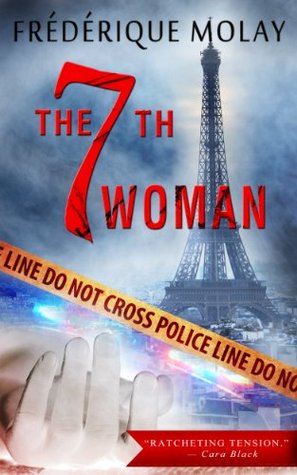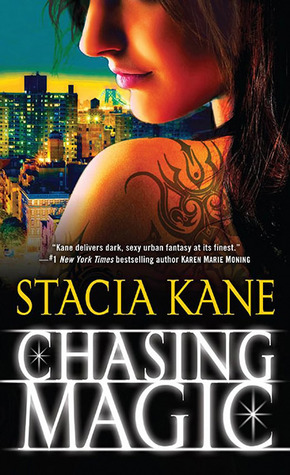I received this book for free from NetGalley in exchange for an honest review. This does not affect my opinion of the book or the content of my review.
Source: NetGalley
The City of Blood
by
Frédérique Molay
police procedural that was published by Le French Book on January 18, 2015 and has 280 pages.
Explore it on Goodreads or Amazon
Other books by this author which I have reviewed include The 7th Woman, Crossing the Line
Third in the Paris Homicide police procedural series and revolving around the dedicated and downhome Chief Nico Sirsky.
This ARC was provided by NetGalley and Le French Book in exchange for an honest review.
My Take
Molay’s plot is a winner with its archeological excavation of a planned arts banquet that includes one of the guests. It’s certainly a twist on the usual mystery as Nico and his teams must explore back into history to solve this crime — one that has a bearing on a present-day serial killer — even as Nico faces an uncertain future with his mother’s fate.
While I do wish Molay would incorporate more show in her story, I do like her characters. I also like being exposed to how things are done in Paris and how Parisians think. (I should mention that Molay is a French writer.)
I do have a problem with the stiffness of Molay’s writing, and I suspect that part of that is due to the new translator: Jeffrey Zuckerman (Anne Trager translated the first two books). And Molay is still a lightweight in how her characters interact, there’s that stiffness I’ve mentioned as well as the leaps she takes from one action to another. There’s one in particular in which Nico is executing a search warrant and talking to the suspect. All of a sudden he shouts out to his team to act now. Okay, fine, except there’s no reason to suddenly react like this. There’s a falseness there that irritates me. I also wish she’d stop with the info dumps, although Clavel’s informative lecture was a definite improvement.
It always amazes me how a case can be solved. Oh, yes, I know that the writer knows how he or she intends to go about it, but I wouldn’t be surprised if police in real life followed the same paths. And Molay is no different. I couldn’t figure out how Sirsky and his people could possibly solve a thirty-year-old murder, and it’s a simple matter of following A to B to C with a few leaps over to F and J *grin*.
Using fashion to date the general time of death was fascinating with the police using the clothing and fashion accessories to determine the most likely time of death. Then there’s that trip to the gay dance club for Nico and Mouman. Too cute…and very useful.
I’m confused about Mercier. At one point in the story Molay refers to him as a landscape painter, and then later, she says he’s a landscape designer. There’s a big difference between someone who paints landscapes and someone who designs yards. That or I am so misinterpreting this.
Catching up…
There’s a reference to one of the experts, Marcel, in The 7th Woman, 1. Molay also refers to the trip the Sirsky family took to Russia a few weeks ago.
“André Breton: ‘The accidents of work are far more beautiful than marriages of convenience.'”
The Story
It’s a planned excavation of modern art, some 30 years later, by the Society for the Disinterment of the Tableau-Piège with a full range of professionals fascinated to learn how time and the “grave” would have on artifacts from a banquet-performance. Only, the excavators get more than they bargained for with a guest from that banquet.
The Characters
Chief Nico Sirsky is a highly valued cop. Dr. Caroline Dalry is his lover and head of the gastroenterology department at Saint Antoine Hospital. His son, Dimitri, likes her as well. Anya is his widowed (and drama-loving) Russian mother. Alexis Perrin is Nico’s brother-in-law and married to Tanya. He’s also Anya’s primary care doctor. Lana and Bogdan are Tanya and Alexis’ children. Jacqueline and André are his former in-laws, Dimitri’s maternal grandparents. Sylvie is their daughter and struggles with depression and a drug dependence.
The Parisian PD
Deputy Chief Claire Le Marec is his right-hand man. Rachel is Nico’s secretary.
Deputy Police Commissioner Michel Cohen is his boss. Nicole Monthalet is Cohen’s boss, the police commissioner. Christine Lormes is the public prosecutor. Deputy Chief Jean-Marie Rost is one of the four section chiefs. Dominique Dreiss is the division’s psychologist. Professor Charles Queneau manages the police forensics lab and has buried himself in his work since his wife’s death. Professor Armelle Vilars is the chief medical examiner.
The performance-banquet murder
It’s Commander David Kriven‘s squad that’s up for this case and includes Captain Franck Plassard. David and his wife, Clara, are having some trouble at home. Captain Pierre Vidal is a scene-of-crime tech. Lieutenant Paco d’Almeida is his assistant. Magistrate Alexandre Becker, a friend of Nico’s, will head up the investigation once the public prosecutor closes the preliminary investigation. His wife, Stephanie, has been keeping in touch with Caroline about Anya.
Samuel Cassian was a new realist, an anti-consumerist, in the ’60s and ’70s and crowned that era in his career with a tableau-piège. Mrs. Cassian is a confusing character who knows the truth and yet prefers to dream. Not that I blame her! Jean-Baptiste Cassian was his twenty-two-year-old son and also a rising artist. Some of the artists at the banquet included Nikki de Saint Phalle and Fabrice Hyber. A photographer, Damien Forest, supposedly from Reuters, documented the event.
Lara Krall was Jean-Baptiste’s fiancée. She’s now married to Gregory Weissman and is a stay-at-home mom. Tim is her loser brother. Daniel Vion took many photographs of their group back then; he now works as a draftsman. Others included Jérôme Dufour who now has an art gallery, Michel Géko, Nathan Sellière works in antiques, Laurent Mercier is now a landscape painter, Camille Frot is married to him, and Sophie Bayle is a jewelry designer.
The serial murders
Commander Charlotte Maurin leads the team that investigates Mathieu Leroy‘s murder, a student studying to be a math teacher. Élodie is Maurin’s fiancée. Captain Ayoub Mouman takes charge of Florian Bonnet‘s case, a student studying philosophy. Clément Roux is a twenty-three-year-old chef.
Dr. Paul-Henri Fursac is the head of the intensive coronary-care unit at Bichat Hospital. Dr. Xavier Jondeau is the doctor on duty during one visit. The Saint Serge Russian Orthodox Church is the family church for the Sirskys. Roger, a maître d’ at La Lorraine, calls Anya Nataliya.
Élise and Arnaud are television newscasters. Enzo is the bartender. Gianni and Théo are a couple of admirers in a gay dance club.
Cité des Sciences et de l’Industrie is…
…an arts complex in the Parc de la Villette consisting of a science, technology, and cultural center; a museum; and, much more. Louis Roche, a former police captain, is chief of security. Laurence Clavel is the park director. Professor Antoine Gazani is the president of the National Institute for Rescue Archeology and a director of an archeological lab at the National Center for Scientific Research. Mrs. Béal is the director of the Nouveau Musée National, a major player in the art world.
Thirty years ago…
…Jacques Langier was the minister of culture.
The Cover and Title
The cover is a different angle on the Eiffel Tower against a stormy sky with a bridge, the Pont Neuf?, bathed in a red light and making me think of blood. A length of yellow police tape angles behind and in front of the title which is in white.
The title is a nickname for the old location in Paris for the city’s butchers, The City of Blood. The same location where the performance-banquet was buried.












